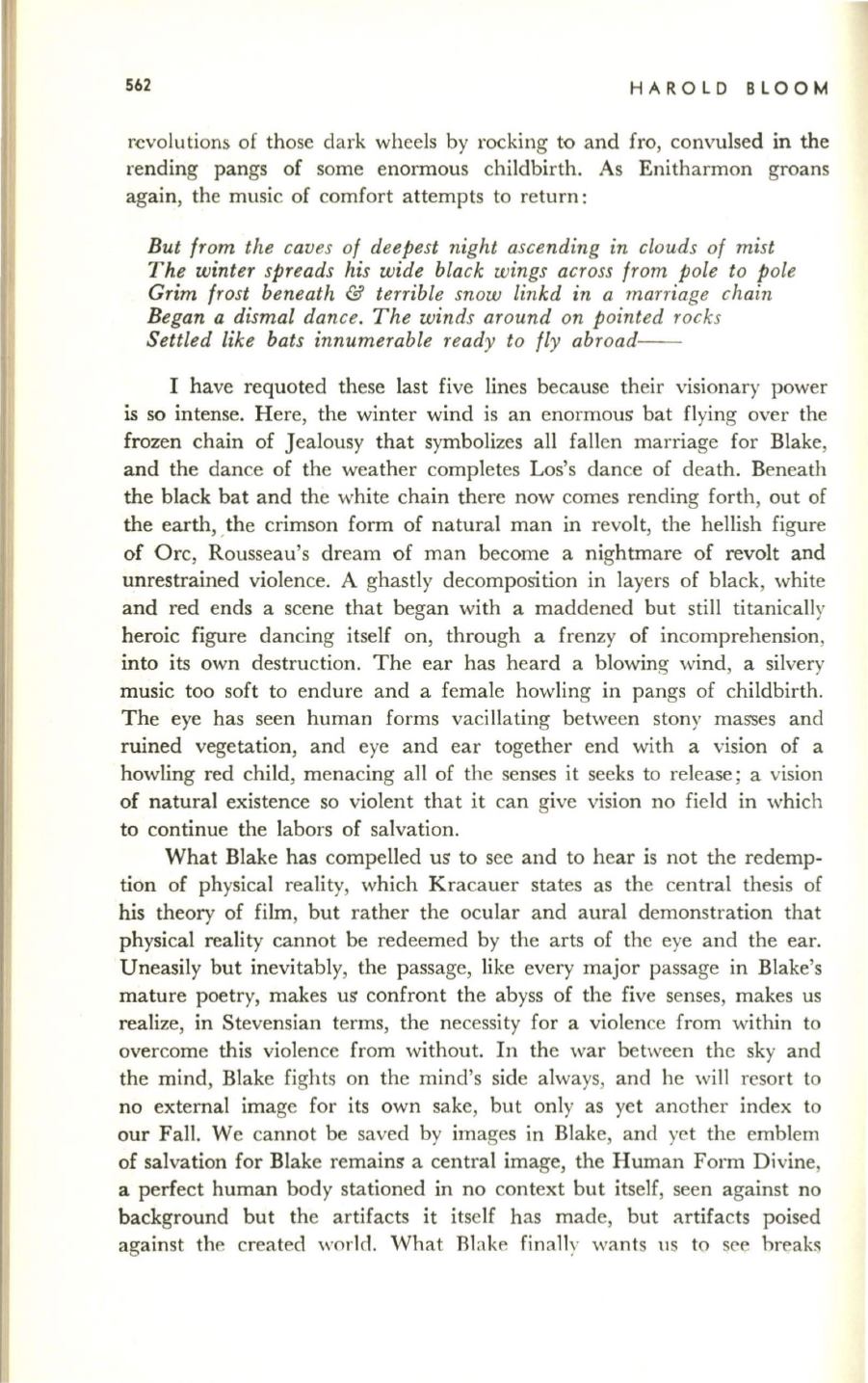
562
HAROLD BLOOM
revolutions of those dark wheels by rocking to and fro, convulsed in the
rending pangs of some enormous childbirth. As Enitharmon groans
again, the music of comfort attempts to return:
But from the caves of deepest night ascending in clouds of mist
The winter spreads his wide black wings across from pole to pole
Grim frost beneath
&
terrible snow linkd in a marriage chain
Began a dismal dance . The winds around on pointed rocks
Settled like bats innumerable ready to fly abroad--
I have requoted these last five lines because their visionary power
is
so intense. Here, the winter wind is an enormous bat flying over the
frozen chain of Jealousy that symbolizes all fallen marriage for Blake,
and the dance of the weather completes Los's dance of death. Beneath
the black bat and the white chain there now comes rending forth, out of
the earth, ,the crimson form of natural man in revolt, the hellish figure
of Ore, Rousseau's dream of man become a nightmare of revolt and
unrestrained violence. A ghastly decomposition in layers of black, white
and red ends a scene that began with a maddened but still titanically
heroic figure dancing itself on, through a frenzy of incomprehension,
into its own destruction. The ear has heard a blowing wind, a silvery
music too soft to endure and a female howling in pangs of childbirth.
The eye has seen human forms vacillating between stony masses and
ruined vegetation, and eye and ear together end with a vision of a
howling red child, menacing all of the senses it seeks to release; a vision
of natural existence so violent that it can give vision no field in which
to continue the labors of salvation.
What Blake has compelled us to see and to hear is not the redemp–
tion of physical reality, which Kracauer states as the central thesis of
his theory of film, but rather the ocular and aural demonstration that
physical reality cannot be redeemed by the arts of the eye and the ear.
Uneasily but inevitably, the passage, like every major passage in Blake's
mature poetry, makes us confront the abyss of the five senses, makes us
realize, in Stevensian terms, the necessity for a violence from within to
overcome this violence from without. In the war between the sky and
the mind, Blake fights on the mind's side always, and he will resort to
no external image for its own sake, but only as yet another index to
our Fall. We cannot be saved by images in Blake, and yet the emblem
of salvation for Blake remains a central image, the Human Form Divine,
a perfect human body stationed in no context but itself, seen against no
background but the artifacts it itself has made, but artifacts poised
against the created world. What Blake finally wants us to see
break~


